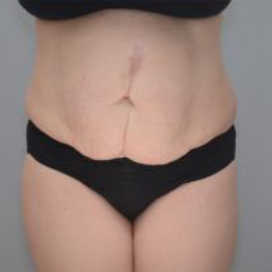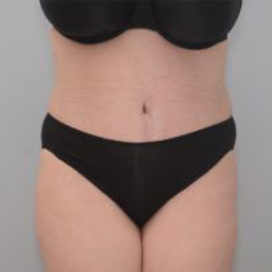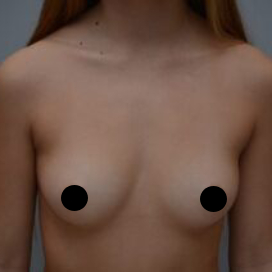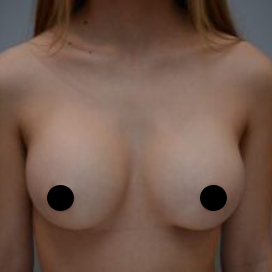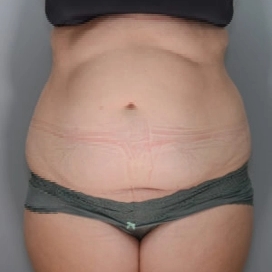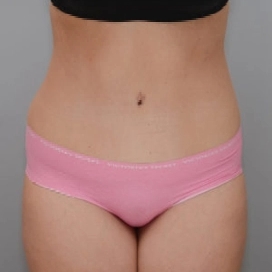
Botox is primarily used as a neuromodulator to relax the muscle and affect the prevalence of wrinkles that occur when animating the face. Common treatment areas include forehead creases, frown lines, often referred to as the 11’s, and crows’ feet. One great thing about Botox is the ability to customize treatment plans for each patient. When I see a new patient for their first injection, I listen to which areas bother the patient the most and then make an appropriate dosage recommendation.By customizing the treatment for each patient, the result better targets their specific goals. Additionally, patients seek a varied degree of improvement with some looking to soften lines and others looking to eliminate motion entirely. Customized dosages allow for a range in degree of motion that can be tailored to the patient’s preference.
myth #1 – botox is only for people with pre-existing wrinkles.
There are two types of lines found in the face: dynamic lines and static lines. Dynamic lines are the creases that occur when animating your face. Contrarily, static lines are those that appear without any motion, when the face is at rest. Static lines worsen over time as dynamic lines become etched into the skin and create a more permanent fold. While Botox is great for targeting dynamic lines and softening static ones, it is also a wonderful tool for preventing wrinkles. By weakening the facial muscles, dynamic lines become less deep and occur less frequently. Consequently, the etching of these lines is prevented which works to prohibit static lines from forming. Starting Botox injections from a younger age can help you to age better and postpone the appearance of wrinkles.
myth #2 – botox is purely an aesthetic treatment.

For most people, Botox is viewed as an aesthetic, anti-aging treatment. There are, however, some injections that can target issues other than fine lines and wrinkles. One common injection for frown lines is done with multiple injections between the eyebrows. This injection is also associated with headache/migraine relief by relaxing a muscle which interacts with a nerve that causes headaches. Another non-aesthetic use of Botox is in the jawline. While this injection, with enough product, is used to slim the jawline, smaller doses can improve symptoms of TMJ or help patients to stop clenching their jaw
Myth #3 – Botox results in a frozen face.
Patients new to Botox often share a concern that their face will be frozen following the injection. When performing a Botox injection, especially for a first-time patient, I favor a conservative approach. To me, the best part about Botox is you can start small and keep increasing the dosage to the patient’s preference. The ability to customize treatment plans allows for a gradual increase in effect and creates a variability in the degree of motion remaining. My system of an initial conservative dosage, with additional treatments as needed, prevents the frozen face phenomenon and empowers the patient to tailor the injection to their goals. In conjunction with varied dosages, injection sites can also be carefully selected to produce different results. For instance, the image on the right shows 6 “maps” for injecting Botox in the forehead. When consulting with a patient, I focus on listening to which areas they wish to improve and then I create a “map” that will best meet those wishes
myth #4 – botox causes worse wrinkles long-term.

One myth feared by new users is that Botox actually worsens wrinkles in the long-term, if/when you stop receiving injections. Fortunately, this is untrue. Patients that stop receiving injections, after any number of years, do not experience advanced aging in comparison to individuals that never had Botox. When a patient stops receiving treatments, wrinkles slowly return to their initial state. However, patients should not expect to then look the same age as when they started receiving injections. Despite the Botox not worsening the advancement of aging, untreated areas of course continue to age thereby affecting your appearance. Botox does not need to be a lifelong commitment and can be stopped at any point. Some patients even use Botox for a short period of time to temporarily make improvements in preparation for an event.
myth #5 – botox is solely for females.

One myth feared by new users is that Botox actually worsens wrinkles in the long-term, if/when you stop receiving injections. Fortunately, this is untrue. Patients that stop receiving injections, after any number of years, do not experience advanced aging in comparison to individuals that never had Botox. When a patient stops receiving treatments, wrinkles slowly return to their initial state. However, patients should not expect to then look the same age as when they started receiving injections. Despite the Botox not worsening the advancement of aging, untreated areas of course continue to age thereby affecting your appearance. Botox does not need to be a lifelong commitment and can be stopped at any point. Some patients even use Botox for a short period of time to temporarily make improvements in preparation for an event.
